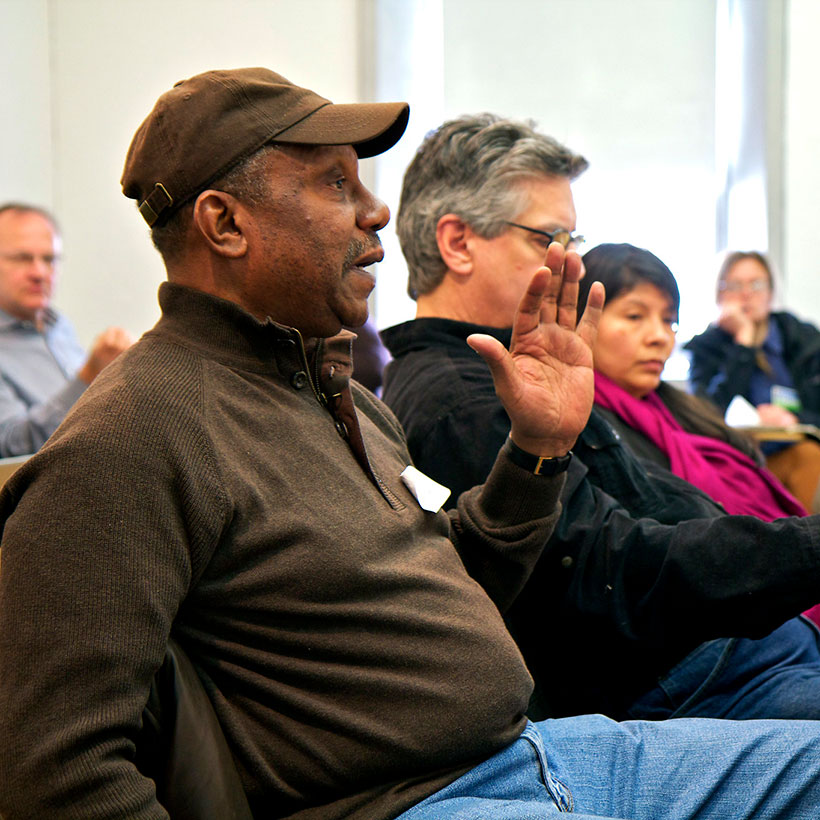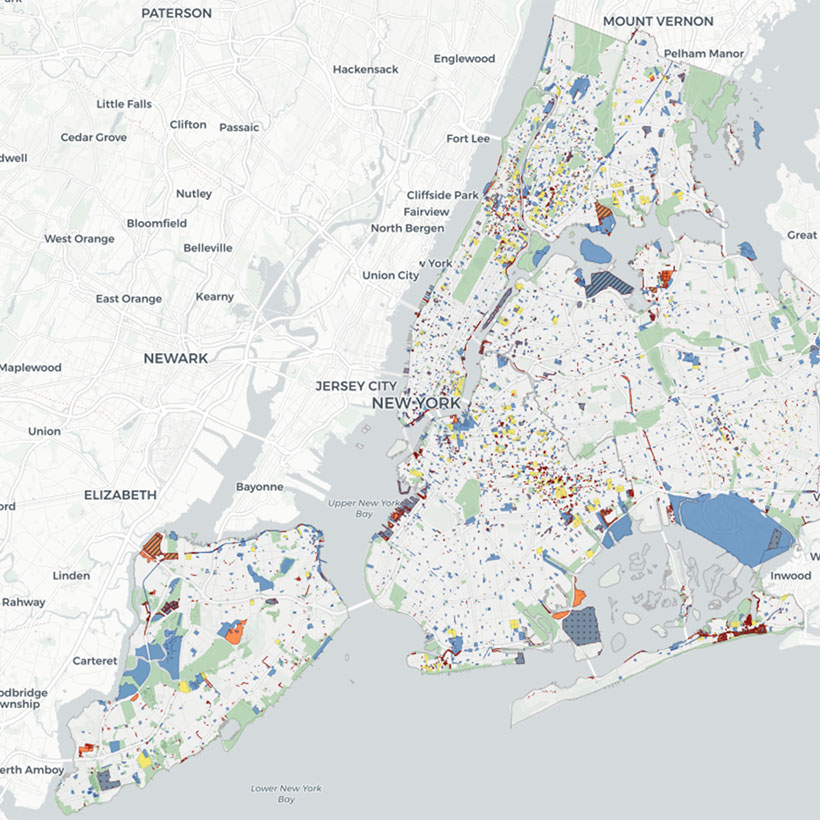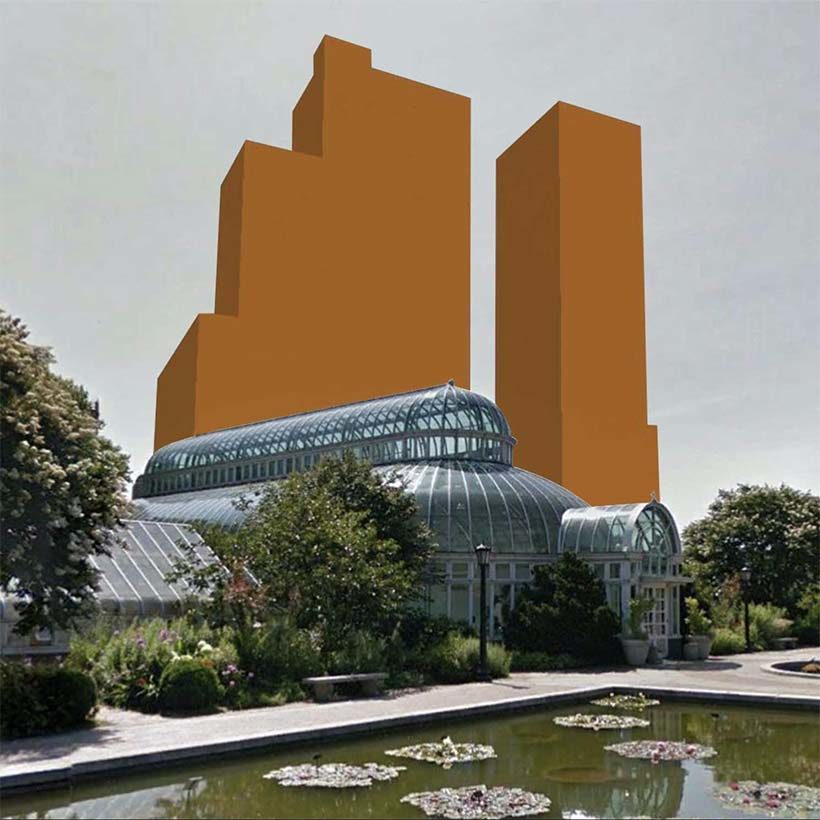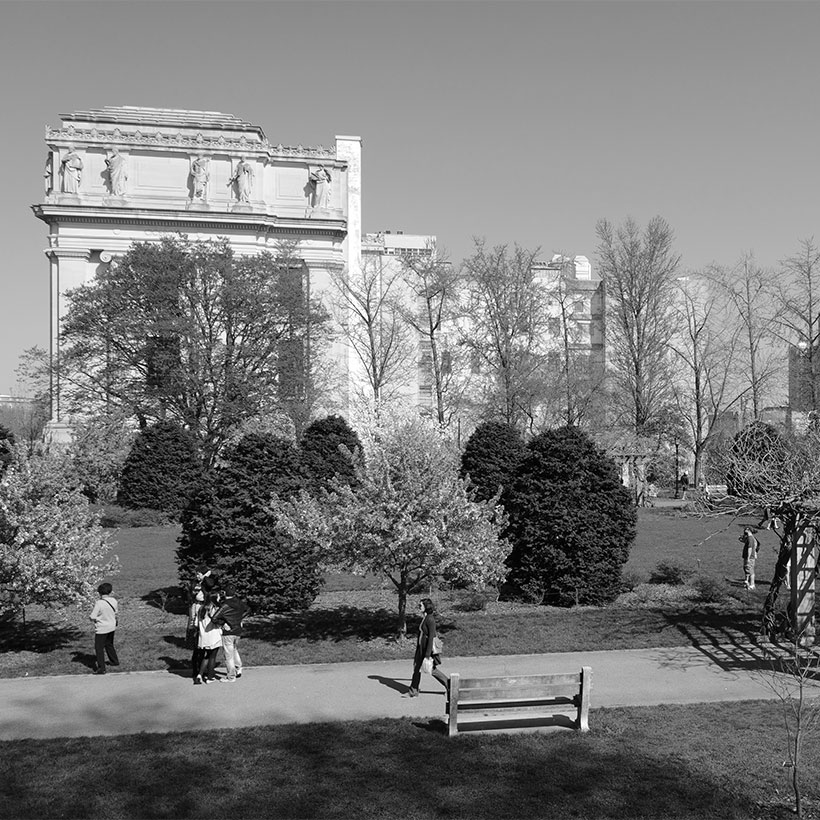960 Franklin Avenue Would Deliver Devastating Shadows and Unaffordable Housing
Comments to City Planning Commission
For more than two years, the Municipal Art Society of New York (MAS) has extensively analyzed the development proposed by Continuum Company for 960 Franklin Avenue from both planning and environmental perspectives. While we recognize the need for affordable housing in Crown Heights, we strongly object to the development on many levels. This includes the astoundingly cavalier approach the developer has taken in the public review process, most recently with the introduction of a 17-story alternative proposal after the Commission’s review session and when all public comment opportunities had been exhausted.
Second, as elaborated on below, the development’s unprecedented scale and devastating shadow impacts on Jackie Robinson Playground and the conservatories, greenhouses, and nurseries at the Brooklyn Botanic Garden (BBG) do not reflect sound planning and would by no means be appropriate for Crown Heights.
Moreover, though the proposal has been touted by the developers as addressing the lack of affordable housing, only a fraction of the proposed housing units would be affordable to the average Crown Heights resident. The project also utilizes questionable rationales to justify the site’s proposed R9D zoning and the height and density of the towers. For these and other reasons we urge the Commission to recommend disapproval of the project.
Download Testimony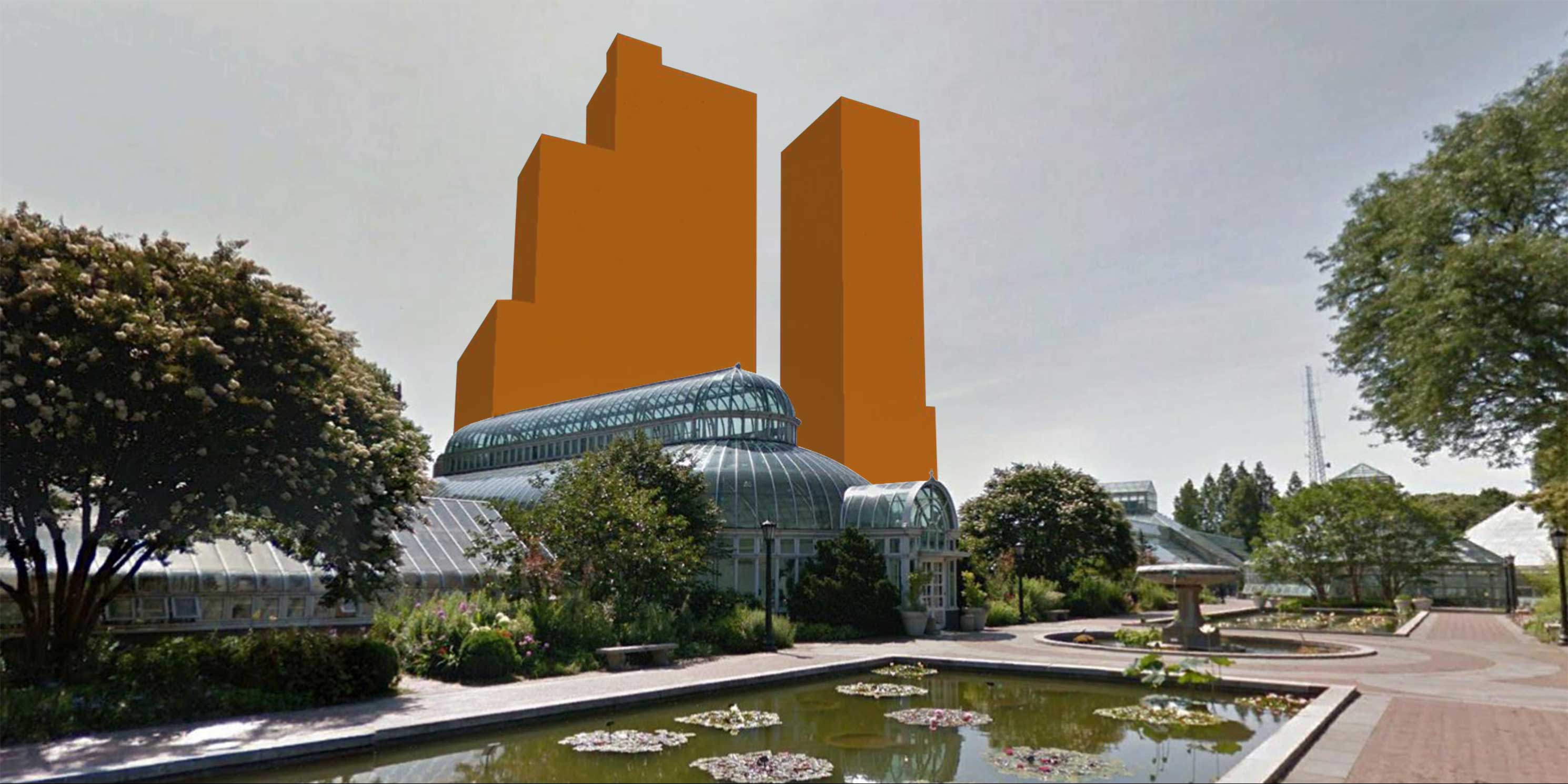
Transparency and Accountability
As participants in each stage of the public discussion of this project, we too were blindsided by the new 17-story proposal presented at the August 26 Commission public hearing. Despite the considerable time we have spent studying the project scoping documents and the DEIS, it was not possible for MAS or anyone else to fully understand the details of the revised proposal. The fundamental issue is that the public has a right to understand and comment on the proposal being considered by the Commission.
We understand that the Department of City Planning has determined that they will not review the new 17-story alternative. We commend that decision. Our comments herein are focused on the proposal that was certified by the Commission.
Project Scale
Located just 200 feet from BBG, the proposed development is situated in a 13-block section of Crown Heights that was rezoned in 1991 to encourage residential development “in keeping with the existing neighborhood character and minimize the potential shadow impact upon the Botanic Garden from any new residential development.”1 Yet at 1.4 million gross square feet, 960 Franklin Avenue would be one of Brooklyn’s largest developments in terms of area. Its two 39-story towers (421 and 424 feet tall) would be more than six times taller than what is currently allowed under zoning, and taller than any other residential development in over a one-and-a-half-mile radius.
Numerous public officials have objected to the scale of the development. Comparing the buildings’ bulk to what one would find in Downtown Brooklyn, Commission Chair Marisa Lago said that the development is “without precedent” and inappropriate for an area that has narrow streets and lacks immediate proximity to subway stations.2 New York City Council Majority Leader Laurie Cumbo stated that there is no precedent for zoning higher than R8 outside of Downtown Brooklyn. “To even consider a development of this size and scale outside of Downtown Brooklyn,” she said, “the public benefits would have to be massive and the site uniquely appropriate.”3 Even Mayor de Blasio called the development “grossly out of scale” and said that he would not support it.4
In addition to general concerns about scale, MAS maintains that the justification for R9D zoning on the site is flawed to begin with. According to the Department of City Planning, R9D districts are created specifically to accommodate towers facing elevated rail lines along the street. Yet this is not the case for the 960 Franklin Avenue site. Rather, the site abuts the Franklin Avenue Shuttle rail line which is landlocked in the middle of the block and recessed below grade.
Shadows
Brooklyn Botanic Garden
The DEIS makes it clear that the new building would cause significant adverse shadow impacts on BBG. Of the 23 conservatories, greenhouses, propagation spaces, and nurseries studied within BBG, project-generated incremental shadows would reach 22 of these sunlight-sensitive resources. Incremental shadows would have a particularly destructive impact on the plants within the greenhouses, especially during the winter. Incremental shadow duration would range from one hour and 54 minutes in December to a staggering four hours and 22 minutes in June, meaning that many sunlight-sensitive plants would not receive the amount of direct light they require to survive.
The DEIS also includes a separate Arborist Report that further assesses the impacts of incremental shadows on the garden. The study concluded that there would likely be long-term changes to the plants over time because of incremental shadow, such as a possible reduction in flowering, turning of flowers towards light sources, slowing of the rate of plant growth, bending or stretching of plant bodies, and an overall decline of plant health. The impacts would be greatest for high light-demanding plants in the desert, Mediterranean, and tropical collections and would likely be cumulative over years. John Trager (curator of desert plants at the Huntington Library in San Marino, CA), one of the consulted experts, went so far as to conclude that the shadow impacts “may alter the ability of garden to carry out its mission.”
MAS and BBG have gone a step further to study the impacts of the proposed development on available daylight5 and on specific plant species. We found that all BBG greenhouses would experience more than 10 days of lost daylight, with over 30 days of lost daylight in the tropical and aquatic collections. This is primarily because shadows will significantly increase across BBG collections, from 1 to 2 hours in March, up to 3.5 hours in June, according to our study. Again, most affected collections include the tropical, aquatic and desert greenhouses, which are sensitive to even modest reductions in available light.
Jackie Robinson Playground
According to the DEIS, shadows from the proposed development would also cause a significant adverse impact on Jackie Robinson Playground, a vital neighborhood resource. New shadow durations would range from one hour and 15 minutes in December to four hours and 45 minutes in June. In fact, the playground would be totally shrouded in shadow on the March, September, and June analysis days. New shadow would be cast on both active and passive recreational areas including tables and benches, play structures, and the basketball courts.
MAS and BBG’s own study of thermal comfort6 found that during the months of January and February, when sunlight is especially necessary for warmth, areas of the playground would lose more than 2.5 hours of beneficial sunlight. Overall, Jackie Robinson Playground would receive just 2.6 hours of thermally beneficial sunlight in winter, far less than the threshold of four hours which we consider ideal.
The impacts would be greatest on the basketball and handball courts as well as the fitness equipment in the southern end of the playground, parts of which would receive less than two hours of winter daylight. However, the play structures and passive seating areas at the northern end of the playground would also experience up to an hour less of thermally beneficial sunlight compared to the as-of-right condition. The result will be a decline in the usability of these facilities during the months of the year when sunlight is most critical to their success as recreation spaces.
Medgar Evers College
Medgar Evers College is located diagonally across the street from 960 Franklin Avenue. While not evaluated in the DEIS, it is important to note that the institution contains an outdoor student courtyard that would be shadowed during certain times of year by the proposed development. Specifically, MAS found that during the winter, when sunlight is especially critical for thermal comfort, portions of the courtyard would experience a loss of up to 1.5 hours of beneficial sunlight.
Surrounding Streets
MAS found that the reduction of daylight in streets would be about 1.5 hours per day on average during the winter in select locations. Moreover, several trees along Franklin Avenue, McKeever Place, and in Jackie Robinson Playground would experience a loss of more than nine growing season weeks with six or more hours of direct sun per day (which is considered ideal). Trees along Montgomery Street and in the Medgar Evers College campus would also lose several weeks of adequate sunlight during the growing season.
Mitigation
34-Story Alternative
The developer has identified a 34-story version of the development that achieves the same level of density but reorients the buildings’ bulk as a possible mitigation measure for shadow impacts. However, the mitigation is minimal, as incremental shadows on BBG would be reduced by just 16 to 39 minutes, and only two to three minutes on Jackie Robinson Playground. The DEIS concludes, “These reductions in shadows duration…would not fully mitigate the impact as sensitive resources would continue to receive insufficient sunlight as a result of an increase in incremental shadows.” For Jackie Robinson Playground, it states, “The 34-story Development would not result in any noticeable change to the duration of incremental shadow coverage…”
Other Mitigation Measures
Other potential shadow mitigation measures identified in the DEIS include adjusting the implementation and extent of rooftop netting, shades, and supplemental lighting at BBG. The DEIS also suggests that plants could be relocated to facilities outside the range of the project’s incremental shadow. We do not find these as acceptable solutions.
Sunlight- and temperature-dependent greenhouse plants cannot simply be moved, as they have very specific growing requirements. Additionally, the Arborist Report notes that several experienced greenhouse managers and curators said that artificial lighting would not be able to imitate the energetics or match the wavelength range of natural light. Some curators noted that to make a difference, these lights would need to be located so close to the plants as to obscure them or make them aesthetically displeasing.
It should also be noted that the public and private investment in the facilities and gardens of BBG is enormous, literally millions of dollars. A cavalier suggestion that those investment are expendable or easily replaced is unacceptable.
Affordable Housing
The developer has touted the affordable housing aspect of their proposal but the actual levels of affordability in their plan would not meet the needs of Crown Heights residents. According to the DEIS, the median household income in the project’s half-mile study area is $57,995 (based on 2013-2017 data). The development would comprise a total of 1,578 dwelling units, of which 50 percent (789 units) would be affordable and workforce housing. It is assumed that:
- 316 units (20 percent of the total number of units) would be for households with an average of 50 percent of the Area Median Income (AMI). This is equivalent to $38,850 for a family of three as of 2015, which is the analysis year used in the DEIS.
- 158 units (10 percent of the total) would be for households with an average of 80 percent AMI (equivalent to $62,150 per year for a family of three as of 2015)
- 158 units (10 percent of the total) would be for households with an average of 100 percent AMI ($77,700 for a family of three in 2015)
- 157 units (10 percent of the total) would be for households with an average of 120 percent AMI ($93,240 for a family of three in 2015)
In other words, 80 percent of the affordable and workforce units would be for households with median incomes that are higher than the neighborhood median. Those units provided voluntarily by the developer (beyond the requirements of MIH) would be tens of thousands of dollars above the median.
Large-Scale General Development Special Permit
To be approved, the project requires a Large-Scale General Development Special Permit and zoning waivers to reduce minimum lot coverage from 33 to 11.4 percent (a 65 percent reduction). The developer is also seeking to waive tower coverage regulations that require the building’s top four floors to be set back 50 to 80 percent above 165 feet in height. With the waiver, the developer would be able to build with 100 percent tower coverage with no setbacks on the uppermost floors. According to the DEIS, these modifications would “promote better site planning and urban design on the Development Site” and “allow slender, uniform towers.”
We are unconvinced of this rationale. Despite our requests for further clarification, the DEIS fails to sufficiently demonstrate how the waivers would improve site planning and urban design. Nor is it clear how adding bulk and eliminating setbacks on the top floors would result in more slender tower design. Instead, we believe the Special Permit and zoning waivers are part of a deliberate strategy to facilitate taller towers with larger and more valuable upper floor area than would otherwise be allowed.
Conclusion
MAS believes that the proposal for 960 Franklin Avenue should be a complete non-starter due to its sheer scale, lack of true affordability, and harmful impacts on critical and beloved open spaces. Equally important, 960 Franklin Avenue would set a dangerous precedent for future area development, effectively giving the green light to projects that ignore the 1991 contextual rezoning and its purpose and function.
It is telling that virtually every public official with a say in 960 Franklin Avenue’s approval has expressed extreme concern or outright disapproval of the project. This is not a proposal that can be tweaked on the margins and made palatable. MAS strongly urges the Commission to disapprove of the project.
Notes
- New York City Planning Commission, Commission Report. 25 Sep. 1991. nyc.gov
- New York City Planning Commission Review Session, 1 Feb. 2021. youtube.com
- Council Majority Leader Laurie A. Cumbo. 960 Franklin Avenue Public Scoping Hearing, 12 Mar. 2019.
- Kim, Elizabeth. “In Surprise Shift, Mayor De Blasio Says He Opposes Controversial Crown Heights Towers.” Gothamist, 21 Dec. 2020. gothamist.com
- Daylight encompasses direct and diffused sunlight, as well as light reflected from buildings and other surfaces
- Thermal comfort is the human perception and experience of a space in which the body is neither overheated nor excessively cold. It is a collective measure of solar radiation, wind velocity, air temperature, and humidity, as well as one’s clothing insulation and metabolic heat levels.

